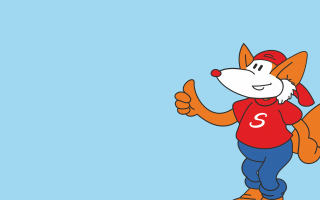
Discover the world of resource management

Environmental awareness begins in childhood
Children are the future. This is especially important so that even the youngest generation will develop a strong environmental consciousness and learn how separate waste collection works. To this end, Saubermacher support parents, kindergartens, and schools, and takes responsibility for both people and the environment.
Do you have any questions regarding our activities? Write us an email to the following address: saubermacher@saubermacher.hu
Waste or recoverable material? What do you think?
Over the course of history, we have increasingly become a “throw-away society”. Today, almost everything is packaged, and we tend to repair things a lot less than we used to, all of which leads to enormous amounts of waste. Not that long ago, waste was simply thrown in holes or incinerated. Both solutions were detrimental to the environment. That’s why we need to find a solution to this problem. We started collecting waste separately, a part of which was recycled. However, recycling does not solve all of our problems. Environmental protection has to start much earlier, as the generation of waste can be avoided, and many things can be reused.

Secret codes? Find them all!
Have you ever wondered what the various labels on packaging mean? Among others, these include recycling codes. You can find them on things besides just drinks, foods, and paper tissues. Maybe you have a plastic lunch box, too. You’ll probably find the recycling code on it.
Recycling codes are used not only on plastic packaging and products, but also on paper, metal, textile, and glass products. Even composite materials have their own codes. Composites are products or packaging that consist of two blended materials.
The triangle with its three arrows indicates the recycling cycle. The number indicates the material. This is important because it provides information on how to recycle the given material.
01 The PET abbreviation means polyethylene terephthalate.
PET material can be reused to make polyester fibers for manufacturing clothing, as well as plastic sheets, drink bottles, and packaging materials for foods.
02 PE-HD or HDPE means high-density polyethylene.
This can be recycled to make plastic bottles and bags, waste containers, plastic tubes, and even synthetic wood.
03 PVC is short for polyvinyl chloride.
This is the material used, for example, for window frames. It is also frequently used for containers for chemicals or adhesives.
04 PE-LD or LDPE means low-density polyethylene.
LDPE is used to make plastic bags, soap dispenser bottles, and other plastic dispensers.
05 PP is short for polypropylene.
PP is used for many plastic parts in cars, like bumpers and interior finishes. It is also widely used for food packaging.
06 PS means polystyrene.
PS is used in toys, flower pots, and suitcases.
07 Most plastic types, such as polylactide (PLA), acrylic glass, polycarbonate, and nylon.
These materials can also be used for packaging. You may also be familiar with soil covers so often used in gardens.
And these are only the recycling codes for plastics. There are almost 100 of these types of codes.


